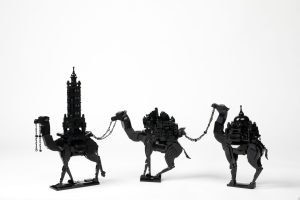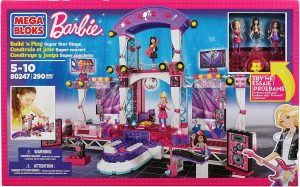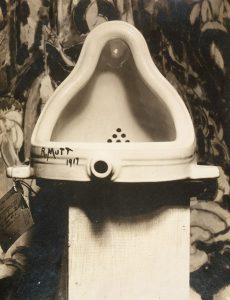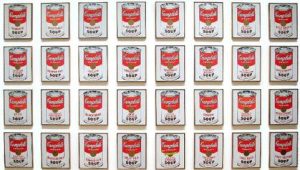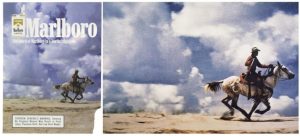The LEGO Sculptures of Ekow Nimako
A Study Guide by Irene Faiz OCT
Step One: Group Work Previewing Activity
Directions: Each group of students receives 8 LEGO bricks.
Assign each group to make as many configurations with their 8 bricks as they can.
Document their creativity by taking a photo of each configuration.
Share the photos with the entire class.
“It is possible to make 60,000 configurations with 8 LEGO bricks.” Ekow Nimako
Note to teachers: Numeracy in the visual art curriculum. Many artists develop their math skills through their art practice.
Step Two: Independent Work / Group Work
(If you want to talk to another student in the class to complete this activity together, you may. It could be a group activity if you would like to work with another member of our class. You will have to contact your classmate and submit this section with both your names on it.)
There is no such thing as inconsequential play. The toys that we have reflect our social class and our world view. This lesson leads students to think about the toys that they grew up with through a critical lens now that they are in their teens. The toys that children play with and experience shape their worldviews. This lesson asks them to think critically about those experiences and influences.
Previewing Activity
Directions: Think about your prior knowledge of LEGO.
- What is LEGO?
- What have you built with LEGO? and/or what have you seen built with LEGO?
- What LEGO sets do you have at home?
- Have you seen the LEGO Movies? How do the LEGO movies influence how we feel about LEGO?
Look at LEGO sets on the internet.
- Name popular culture characters that we see in LEGO sets?
- Which characters, or kinds of characters, do we NOT see in LEGO sets?
- Name the popular culture stories that we see represented in LEGO sets.
- Which stories do we not see represented in LEGO sets?
- What concept of beauty is being promoted by LEGO?
- What concept of “cool” is being promoted by LEGO?
Step Three: (Independent Work)
Ekow Nimako’s Building Black: Civilizations
Ekow Nimako is a contemporary Ghanian-Canadian artist whose art reminds us of Africa’s “remarkable history and powerful future in an Afrofuturist exhibition,” featuring his sculptures made of black LEGO pieces.
Ekow Nimako’s LEGO sculptures teach us about Africa 1000 years ago and Africa 1000 years into the future.
Read more information about this exhibit by clicking on this link.
Making Inferences
Aga Khan Museum
Look at the above representation of Ekow Nimako.
What facial expression do you see?
What might the sunglasses and wedding ring tell us about this artist?
Step Four: (Independent Work)
Media Literacy Analysis
Study the Media Literacy Triangle
Review the Key Concepts of Media Literacy that pertain to Ekow Nimako’s sculpture:
- Media Construct Reality
- Media Construct Versions of Reality
- Audiences Negotiate Meaning
- Media have economic implications
- Media Communicate Values Messages
- Media Communicate Political and Social Messages
- Form and Content are Closely Related in Each Medium
- Each Medium has a Unique Aesthetic Form
****
Following you will find images of two of Ekow Nimako’s sculptures (The Bandit Queen of Walatah and World on a Camel’s Back). Choose one of the following to complete the questions about this media experience.
****
- The Bandit Queen of Walatah, 2019 – background notes
- Story of resistance
- Story of a young girl who was enslaved
- Queen of the desert
- Strong woman who was left in the desert to die but she chose to rise up
- She narrowly escaped the cruelty and abuse of the slave caravan, only to be left for being almost “dead” in the unforgiving Aoukar Basin
- But she did not die. She was blessed by the Moon Goddess Mawu-Lisa and she grew up and developed the will to save all girls from slavery and make the rich slave-merchants pay for their indecent trade
- She grew to have a strong and fierce tribe of freed women warriors of 100 women
- The Bandit Queen’s Tribe were strong, but they were also ethical
- They only kept for themselves what they needed and they gave away the majority of what they managed to “take” to the poor and hungry and oppressed
- Like tales of Robin Hood
- Robbed from the rich to give to the poor
- “Robin Hood” type of character
-
World on a Camel’s Back, 2019 Ekow Nimako Studios
World on a Camel’s Back – background notes
-
- Islamic Architecture on the backs of camels
- Slums on the backs of camels
- Structures like places in Arabia on the backs of camels
- Culture and language is conveyed through the architecture
- The camel is a beast that carried important burdens
- The camel’s head is tilted up
- The Saharan Trade could not have been possible without the camel
- The camel was able to endure the harsh conditions of the cross-cultural exchange that took place from West Africa to as far as India, beginning aroung the 7th centure B. C. and continues today
- Each camel in this sculpture carries a unique architectural load that tells up about the palaces where the caravans travelled in hundreds and sometimes thousands
- Ekow Nimako is being inspired by three types of places:
- 1. The recognizable domes of Persian Palaces
- 2. The clustered slum dwellings of Cairo
- 3. The elegant minarets of important mosques across the Middle East
Text – What?
- When you play with LEGO bricks, what might you like to make?
- What characters have you seen made with LEGO bricks?
- What settings have you seen made with LEGO bricks?
- What stories from popular culture have you seen made with LEGO bricks?
- Look at representations of Barbie in LEGO sets.
amazon.com
What stereotypes do you notice?
How are the female characters represented?
Describe their body type.
Describe their clothing.
Describe their hair styles.
Describe their shoes.
Describe their facial expressions.
What cultural groups do they represent?
What cultural groups are NOT represented in these Barbie dolls?
When we see men in LEGO sets, how are they represented?
Describe their clothing. Describe their facial expressions.
What is the lifestyle of these LEGO characters?
- Which cultural groups in our society are not easy to find in LEGO sets?
- Who is missing in the LEGO universe?
- What materials is each of these sculptures by Ekow Nimako made of?
- Is Ekow Nimako using LEGO bricks the same way that they have been used in the past or is he using them differently?
- How might placing a LEGO sculpture in an art exhibit change the way that people think about LEGO?
How might placing a LEGO sculpture in an art exhibit change the way that people think about LEGO?
Consider Marcel Duchamp’s sculpture titled, Fountain, 1917.
Wikipedia
Consider Andy Warhol’s pop culture prints titled, Campbell’s Soups Cans, 1962.
Wikipedia
Consider Richard Prince’s appropriated photographs titled, Cowboy Series, 1989.
Northeastern University
- Look at both artworks (The Bandit Queen of Walatah, 2019 and World on a Camel’s Back, 2019) by Ekow Nimako. What stories is Ekow Nimako representing in each of these LEGO sculptures? Why is it important for him to tell these stories?
- How are these stories different from the popular culture stories we usually see in LEGO sets?
- Whose stories is Ekow Nimako representing in his LEGO sculptures?
- What might be the explicit message Ekow Nimako is trying to communicate? (“Explicit” refers to the obvious message.)
- Whose point of view is Ekow Nimako representing?
- What values do these stories promote?
- What might be the implicit message Ekow Nimako is trying to communicate? (“Implicit” refers to the implied message.)
- Whose point of view is Ekow Nimako representing?
- What values do these stories promote?
Audience – Who?
- Who might be the target audience for this text?
- How and why might this text appeal to its target audience?
- How does this text appeal to me? Or, how does this text NOT appeal to me?
- How might this text include some people while excluding other people?
- How might this text be influencing society?
Production – How?
- Who produced the LEGO sculptures?
- For what purpose(s) were they produced?
- Who is Ekow Nimako empowering through his art?
- Why is it important to empower this community in our country?
- How might knowing the producer and purpose change the meaning we make from the LEGO sculptures? Consider: Now that you know about Ekow Nimako’s intent, how are you viewing the LEGO sculptures differently?
Step Five: (Independent Work)
Paragraph Writing
Remember to structure your paragraph by following the SEEES formula:
S – Topic Sentence
E – Evidence 1
E – Evidence 2
E – Evidence 3
S – Concluding Sentence
Questions:
- Why is it important for Ekow Nimako to create his LEGO sculptures to tell this story about the importance of Black history?
- Who is Ekow Nimako empowering through his art? Why is it important to empower this community in Canada?
- How might Ekow Nimako’s art promote a hopeful message for the future of Canada’s Black community ?
Sample Topic Sentence:
(You may use this topic sentence. Or, you may choose to write your own topic sentence. Remember to focus on one sculpture by Ekow Nimako. You have two choices. A. The Bandit Queen of Walahah, 2019. B. World on a Camel’s Back, 2019.)
“Ekow Nimako’s LEGO sculpture titled, The Bandit Queen of Walahah, 2019 helps us understand the importance of black history through strong characters and stories of hope and resilience.”
OR
“Ekow Nimako’s LEGO sculpture titled, World on a Camel’s Back, 2019 helps us understand the importance of black history through strong characters and stories of hope and resilience.”
E1 Explanation #1
E2 Explanation #2
E3 Explanation #3
S Sentence of Conclusion / Restate the Topic Sentence
Restate the Topic Sentence in different words. Restate your main idea. Summarize your ideas. Use words such as: Therefore, All in all, Thus, As a result.
This lesson is suitable for Intermediate and Senior Art, and Media Arts students.
*Photo of Ekow Nimako: *https://www.samuelengelking.com/PORTRAIT/26


